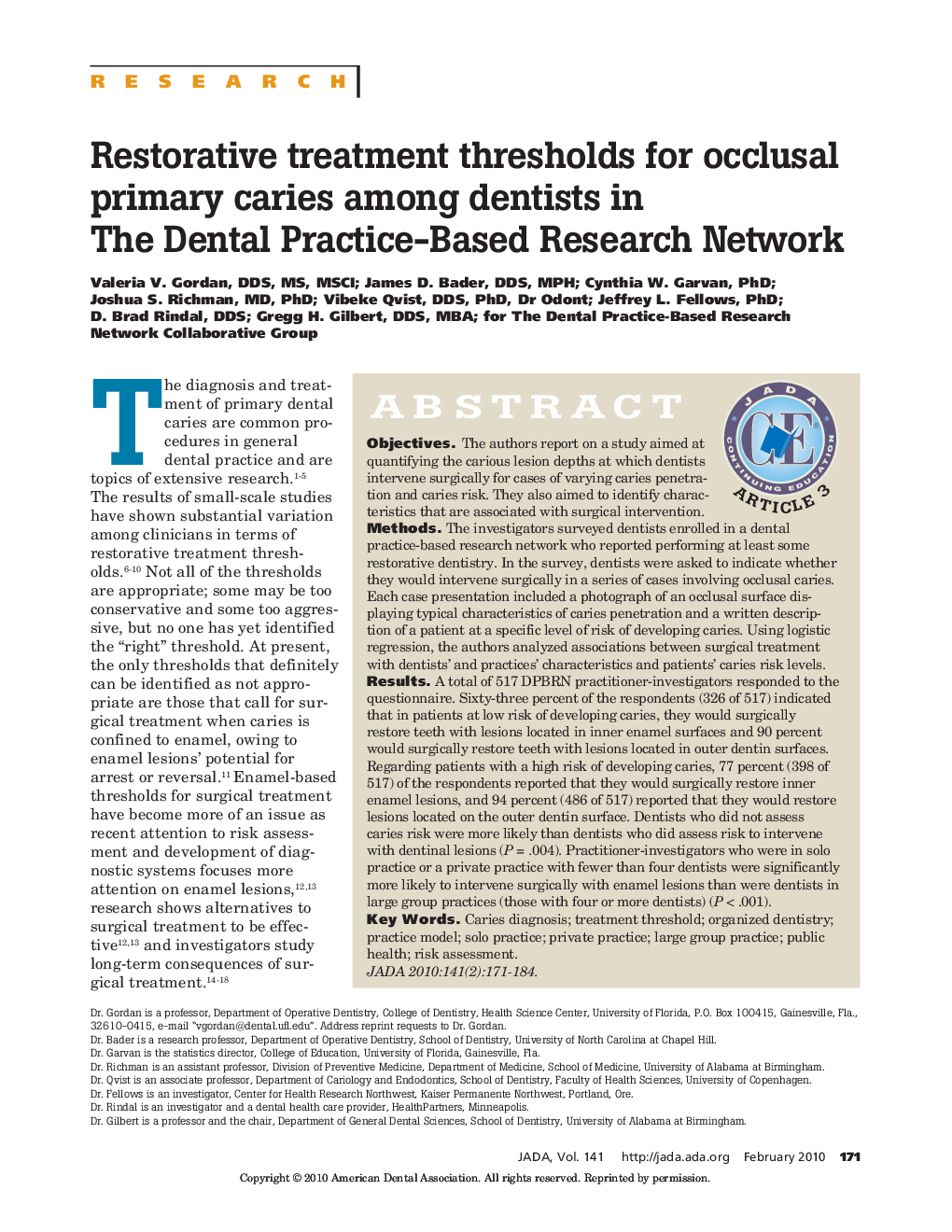| Article ID | Journal | Published Year | Pages | File Type |
|---|---|---|---|---|
| 3138900 | The Journal of the American Dental Association | 2010 | 14 Pages |
ABSTRACTObjectivesThe authors report on a study aimed at quantifying the carious lesion depths at which dentists intervene surgically for cases of varying caries penetration and caries risk. They also aimed to identify characteristics that are associated with surgical intervention.MethodsThe investigators surveyed dentists enrolled in a dental practice-based research network who reported performing at least some restorative dentistry. In the survey, dentists were asked to indicate whether they would intervene surgically in a series of cases involving occlusal caries. Each case presentation included a photograph of an occlusal surface displaying typical characteristics of caries penetration and a written description of a patient at a specific level of risk of developing caries. Using logistic regression, the authors analyzed associations between surgical treatment with dentists' and practices' characteristics and patients' caries risk levels.ResultsA total of 517 DPBRN practitioner-investigators responded to the questionnaire. Sixty-three percent of the respondents (326 of 517) indicated that in patients at low risk of developing caries, they would surgically restore teeth with lesions located in inner enamel surfaces and 90 percent would surgically restore teeth with lesions located in outer dentin surfaces. Regarding patients with a high risk of developing caries, 77 percent (398 of 517) of the respondents reported that they would surgically restore inner enamel lesions, and 94 percent (486 of 517) reported that they would restore lesions located on the outer dentin surface. Dentists who did not assess caries risk were more likely than dentists who did assess risk to intervene with dentinal lesions (P = .004). Practitioner-investigators who were in solo practice or a private practice with fewer than four dentists were significantly more likely to intervene surgically with enamel lesions than were dentists in large group practices (those with four or more dentists) (P < .001).
